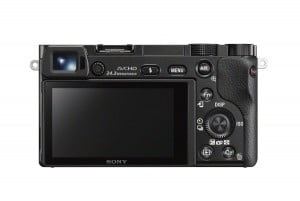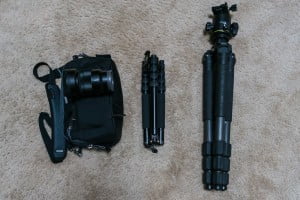Disclosure: This post may contain affiliate links. I earn a small commission of product sales to keep this website going.
Hiking & Backpacking with a new Mirrorless Camera
Am I officially switching from Canon DSLRs to mirrorless cameras? Read about my initial thoughts for making the conversion.
I took my new Sony a6000 and image-stabilized 10-18mm lens out for a few hikes last week to see how I can manage with it.
The first things I noticed the day I got it
- It’s tiny! I’m used to the big grip on the Canon 5DII and the wide placement of buttons and dials. Everything is crammed in so close on these small Sonys. I felt like I was going to drop it. But the more I fidget with it, the more comfortable I get with both the grip and operation of controls.
- The fragile image sensor is RIGHT THERE in all its glory when changing lenses. It’s not covered by a mirror (hence the “mirrorless” camera) and it’s very far forward. The forward placement is a good thing for light sensitivity, but I’ll have to be very careful when changing lenses, especially in the environments I frequent. I see a lot of sensor cleaning in my future (it does have a hypersonic vibration cleaning function to loosen dust particles).
- Right away I realized I had to purchase a semi-hard LCD protector and a cover for the flash hot shoe. Both of these are exposed and look like I might accidentally make them non-functional with slight abuse.
What’s Cool
- The buttons are highly customizable. I can almost set it up to match the control configuration on my Canon, and this has helped me acclimate to it tremendously.
- Custom White Balance is much easier to set. I didn’t do this much on the Canon because it was just a pain in the ass navigating into the bowels of the submenus, so I just fixed it in post-processing. I can do it on the Sony with three easy button pushes. This will make my workflow much more efficient.
- The Live View is great for getting instant feedback on what my exposure settings will do, instead of guessing what the light meter is registering. And with the Dynamic Range Optimizer set, I can get a feel on what kind of detail I’ll be able to pull out of the shadows and how much I’ll be able to drop the highlights in post-processing. I haven’t found myself bracketing shots in tricky exposure situations like I used to. This will again make my workflow more efficient.
- I haven’t found myself using the Electronic Viewfinder at all. One gripe about optical viewfinders in DSLRs is that I was always removing my sunglasses to get a shot. Now I can just peek under my glasses to the screen and compose my shot.
- It’s so damn light! Did I mention that already? I tried using the strap I used for my Canon, a Sun Sniper, but the Sony doesn’t weigh enough to straighten out the strap!
- Because of its light weight, I was able to trade in my $400, five-pound SLR tripod for a $140, two-pound compact tripod (the Sirui T-005X). Even though the SLR tripod was carbon fiber, I still couldn’t justify the weight or space to take it on overnight trips. The new tripod folds up smaller than my forearm.
The Images
I was blown away with the first few RAW files I processed. Dynamic range and image quality is better than what I’m used to.
- The a6000 produces much less noise than the Canon 5DII. Especially at high ISO. Further, with the lowest ISO, I can push the shadows up much higher without any noise showing at all. On the Canon I’d always get some very noticeable color noise as soon as I started pushing the shadows up.
- The images are noticeably sharper. I was previously shooting with Canon’s top-of-the-line L-series lenses, and even those required a fair amount of sharpening in post-processing to account for the natural softness inherent with digital photography. This Sony, with the Sony lenses, requires very little sharpening in comparison. The autofocus system is much more advanced than the 5DII.
- The fact that this is a crop-frame camera hasn’t phased me at all. That doesn’t really mean anything to me anymore (it used to be a deal-breaker for me). And Sony’s E-mount lenses can be used on both full-frame and crop-frame cameras.
Due to its small size and LCD screen, I feel like my creativity has been renewed and that’s what I needed.
Do you think the Sony a6000 would work for you as a travel & backpacking camera?






